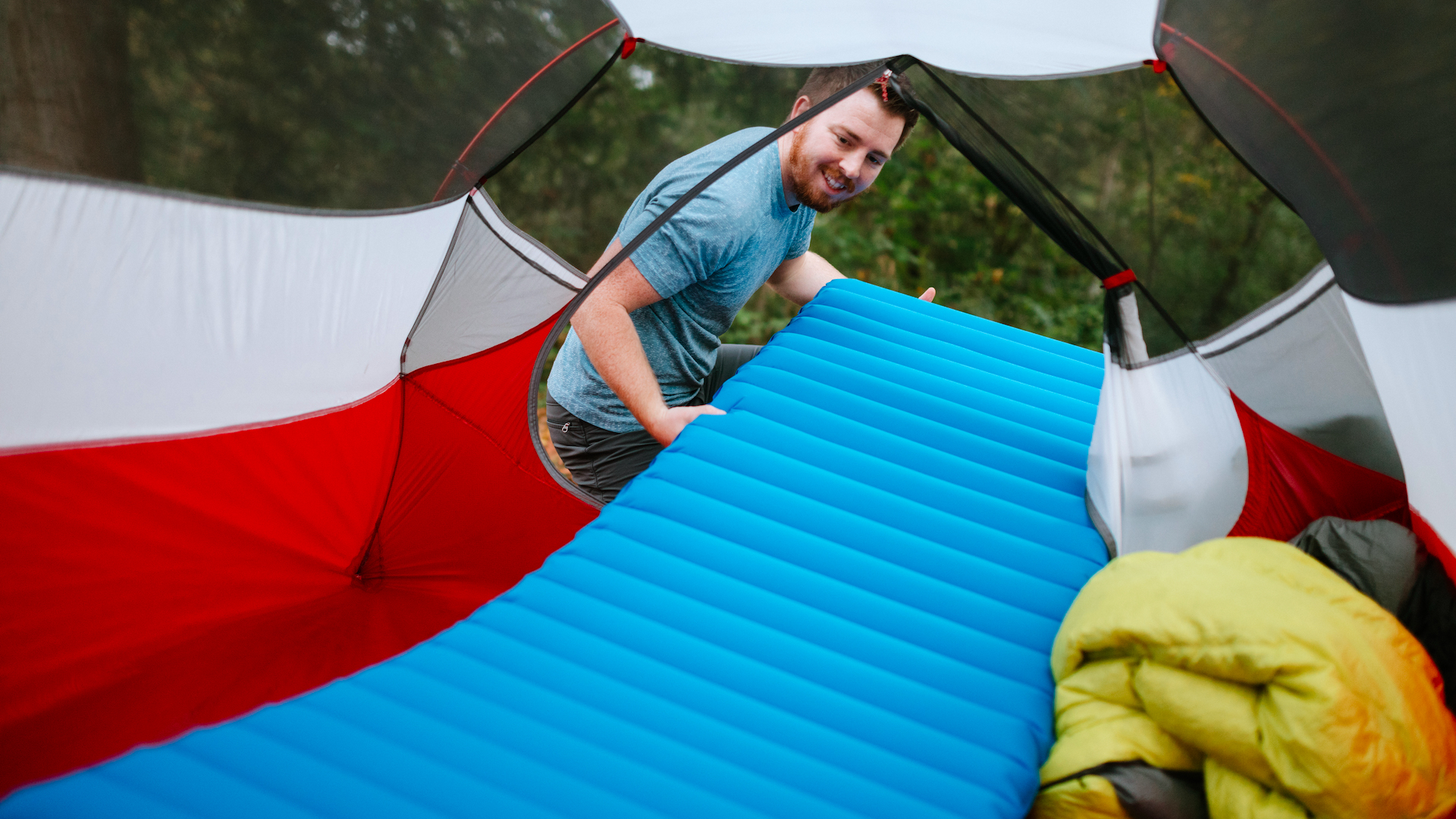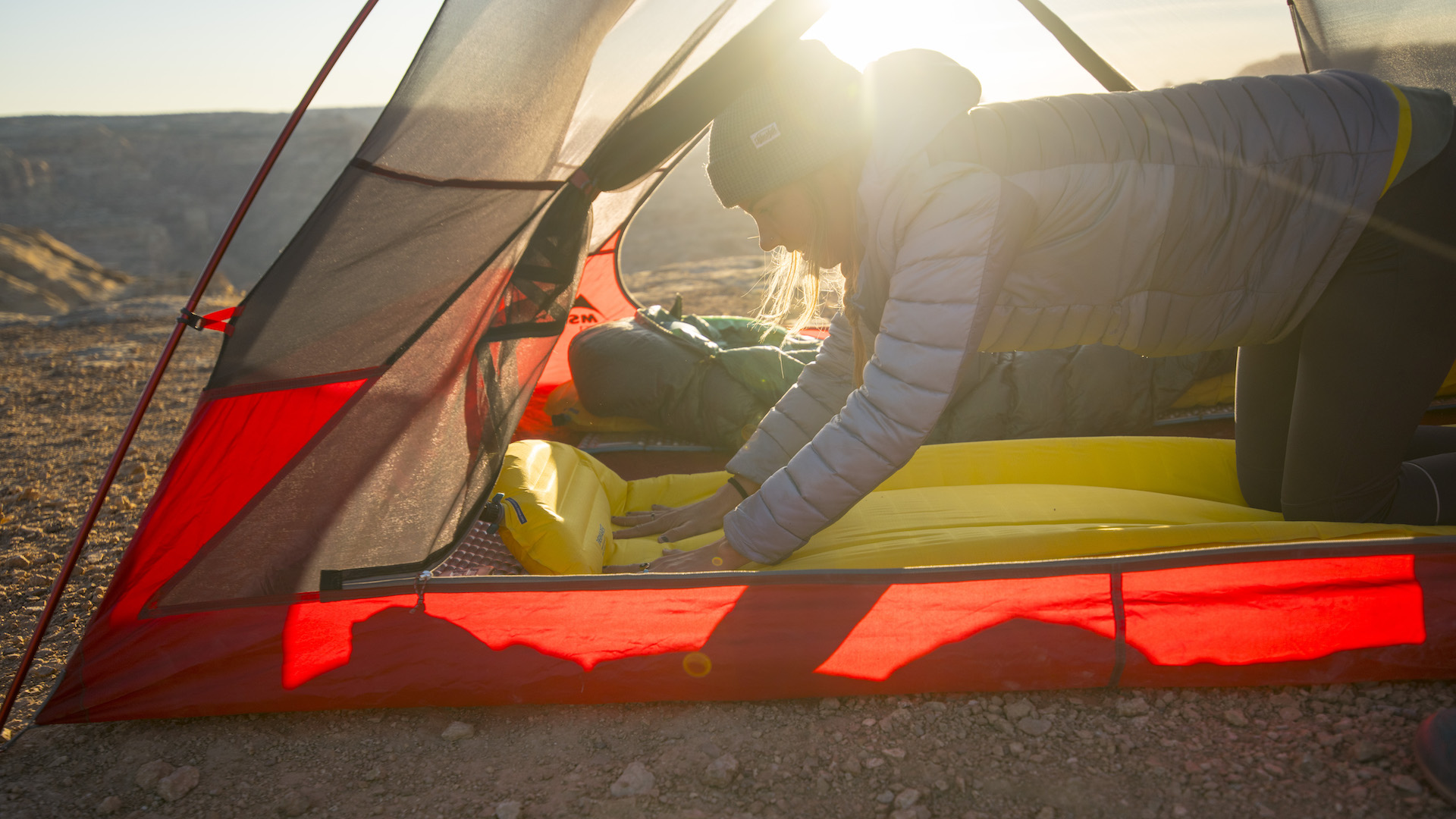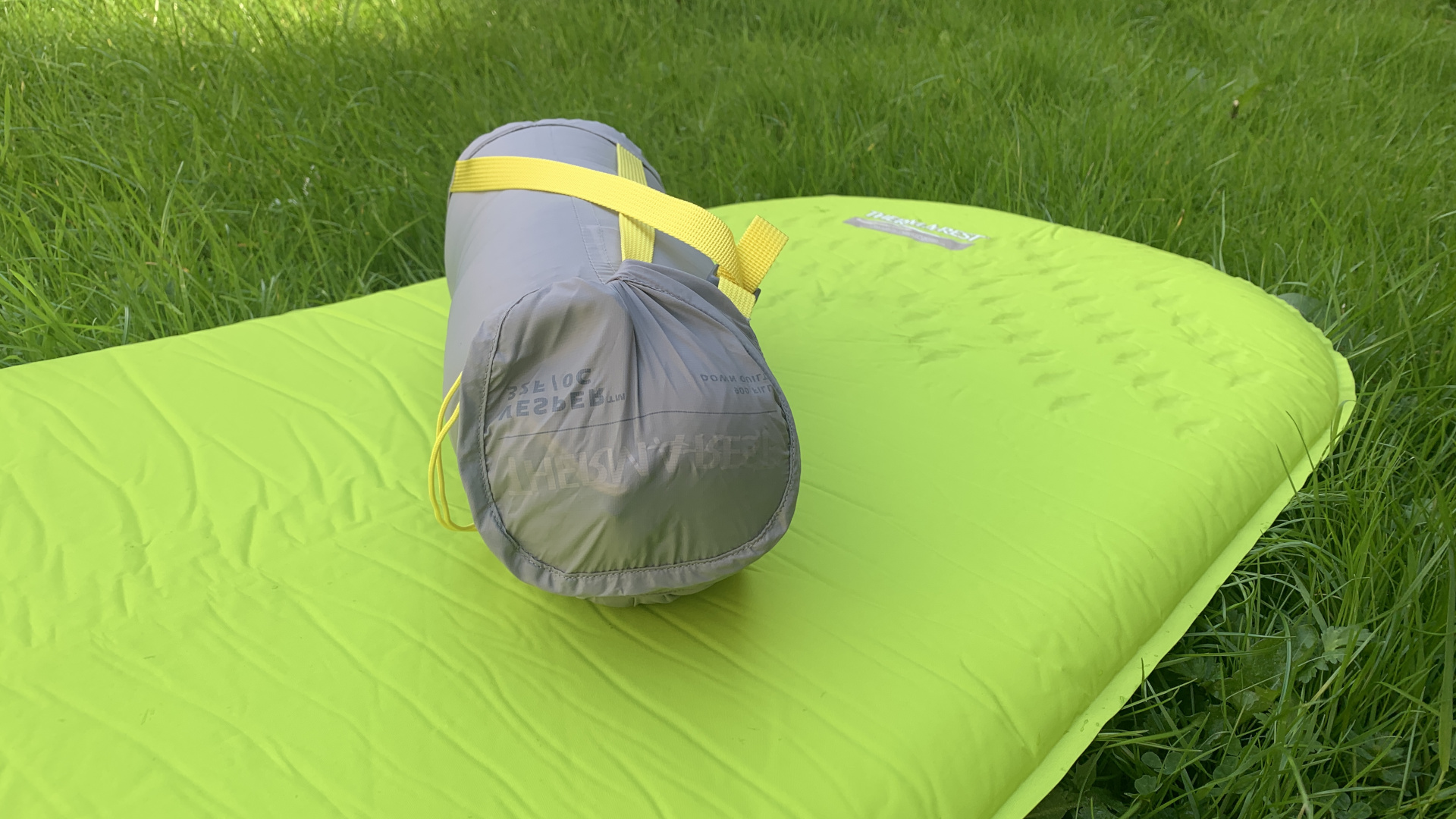Mummy vs rectangular shaped sleeping pad: which do you need?
We compare mummy vs rectangular shaped sleeping pads to help you pick the right one for the best night’s sleep

For backpacking adventures and wild camping exploits, you need all the rest you can get at night. The best option for your mattress is easily the inflatable sleeping pad, which keeps you up off the cold ground and provides soft, insulating warmth, but rolls away and fits easily in your backpack in the morning. When weighing up different sleeping pads, there are obvious factors to consider, such as how warm it will be (noted by the R-value), how much it weighs and how long it is – particularly if you’re tall. But there are also two different shapes of sleeping pad that will affect how it performs across these different factors, and it’s not always obvious until you sleep on one that you might have chosen the wrong shape. In short, you’ve got your basic rectangular sleeping pads, then you’ve got mummy-shaped pads which are narrower, have rounded corners and taper off at the bottom. In this article, we compare mummy vs rectangular shaped sleeping pads to help you understand the differences, and pick the right one for the best night’s sleep.

Mummy vs rectangular shaped sleeping pad: weight
Because a mummy-shaped sleeping pad tapers off at the bottom and essentially shaves off the corners for a more rounded shape, it uses quite a bit less material than a rectangular pad, and that makes it lighter than a rectangular pad. The weight differential can be around four or five ounces – if we take Therm-a-Rest’s NeoAir XLite NXT pad as an example, the mummy-shaped version in regular size is 12.5 oz, whereas the rectangular model weighs 1 lbs 2 oz. Four ounces – essentially like carrying two extra tennis balls – certainly isn’t enough to make any difference for car camping, but if you’re fastpacking up the Appalachian Trail, it may be enough to persuade you to cut some corners, so to speak.

Mummy vs rectangular shaped sleeping pad: packability
Once again, because a mummy-shaped pad is smaller when it’s inflated, it’s going to be smaller when it’s rolled up in your backpack, but is it enough to make a difference? If we compare the same two Therm-a-Rest pads as before, the mummy shape has packed dimensions of 9 x 4.1 inches in regular, whereas its rectangular counterpart stuffs down to 11 x 4.6 inches. At two inches shorter and half an inch thinner, it’s definitely not enough of a disparity to matter when you’re driving all your gear to the campsite, but for a very full hiking backpack already stuffed to the brim with your sleeping bag, camping stove, extra clothes and food, we can see an argument for the smaller pad.

Mummy vs rectangular shaped sleeping pad: comfort and versatility
Comfort being a subjective topic, there are a few aspects to a sleeping pad that determine how good of a night’s rest you’ll get. Focusing here on thickness (loft) and R-value, which describes how much thermal resistance the pad provides against conductive heat loss, the two pads we’ve been comparing are objectively the same. They are both three inches thick with an R-value of 4.5, making them both suitable for three-seasons camping.
However, the mummy-shaped sleeping pad does give you less surface area on which to sleep, which can matter more if you’re a side sleeper, front sleeper or restless sleeper. There’s less of it, so it’s easier for part of your body to end up on the ground, which won’t be comfortable nor will it protect you from the cold. It may have an R-value of 4.5, but if your feet end up touching the ground, they’ll be cold and soon, so will the rest of you. For this reason, a mummy pad is not a great option for winter camping.
Similarly, if you’re a front sleeper and bend your elbows wide to rest your head on your hands, your elbows may end up on the ground, especially if you're bigger to begin with. If you’re a back sleeper that doesn’t move around a whole lot, you don’t need to worry about this as much, but suffice to say that when you sacrifice a little weight and pack size, there’s a good chance you also sacrifice some comfort. How much depends on the type of sleeper you are. Suffice to say therefore that rectangular pads are more accommodating to different types and sizes of sleeper, and are more versatile.

Mummy vs rectangular shaped sleeping pad: price
In the two sleeping pads we’ve been comparing, the rectangular pad retails at about $30 more than the mummy pad, which makes sense because more materials are involved in its construction. However, we’d say that if you’re looking across different brands and models, this isn’t always necessarily the case. How technical a sleeping pad is is likely to make it more expensive, whereas we’ve seen both budget and high end pricing for both shapes of pad.
All the latest inspiration, tips and guides to help you plan your next Advnture!
| Header Cell - Column 0 | Mummy-shaped sleeping pad | Rectangular-shaped sleeping pad |
|---|---|---|
| Weight | Lighter than rectangular | 4 or 5 ounces heavier than a comparable mummy-shaped bag |
| Packability | Takes up less room in your pack | Takes up more room in your pack |
| Comfort and versatility | Less sleeping area means you might roll partially off your pad | More sleeping area and more versatile |
| Price | Both budget and high end pricing available | Both budget and high end pricing available |
Mummy vs rectangular shaped sleeping pad: the verdict
Since price isn’t a major variable between the two sizes, we think this one really comes down to what type of sleeper you are, and whether weight and pack size are more important to you than comfort. Remember that the weight and size differential isn’t huge, so if you’re a side or front sleeper and really want to be comfortable, you might be happy to trade those extra inches and ounces for a better night’s sleep. But if keeping your base load down for a fast adventure is your game, there are tons of great mummy-shaped pads out there that are ultra light, warm and comfortable.
- How to clean a sleeping pad – and prevent mildew buildup
Julia Clarke is a staff writer for Advnture.com and the author of the book Restorative Yoga for Beginners. She loves to explore mountains on foot, bike, skis and belay and then recover on the the yoga mat. Julia graduated with a degree in journalism in 2004 and spent eight years working as a radio presenter in Kansas City, Vermont, Boston and New York City before discovering the joys of the Rocky Mountains. She then detoured west to Colorado and enjoyed 11 years teaching yoga in Vail before returning to her hometown of Glasgow, Scotland in 2020 to focus on family and writing.

